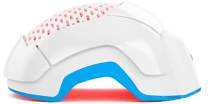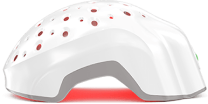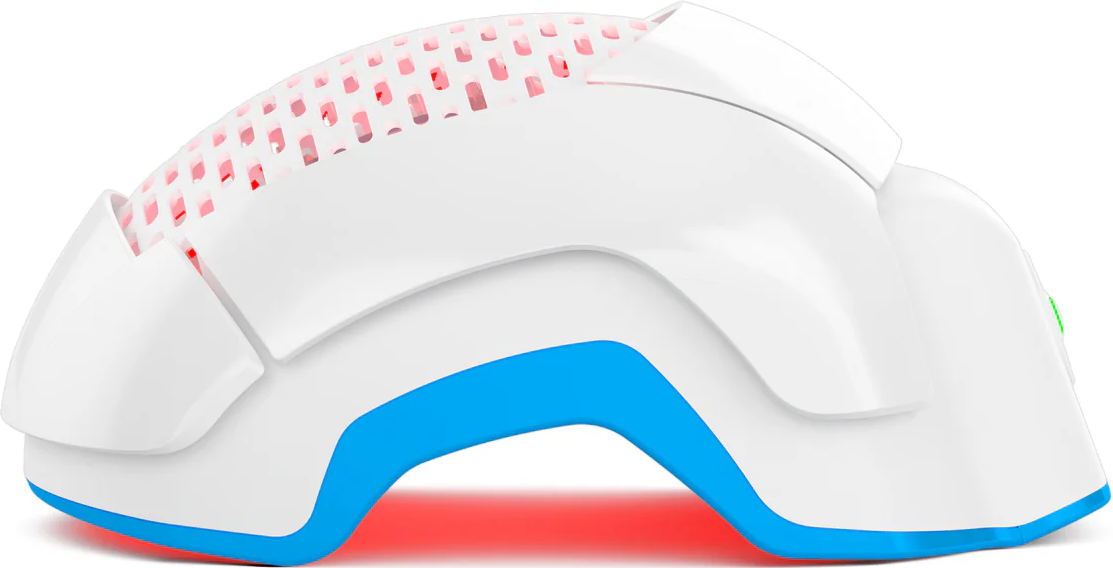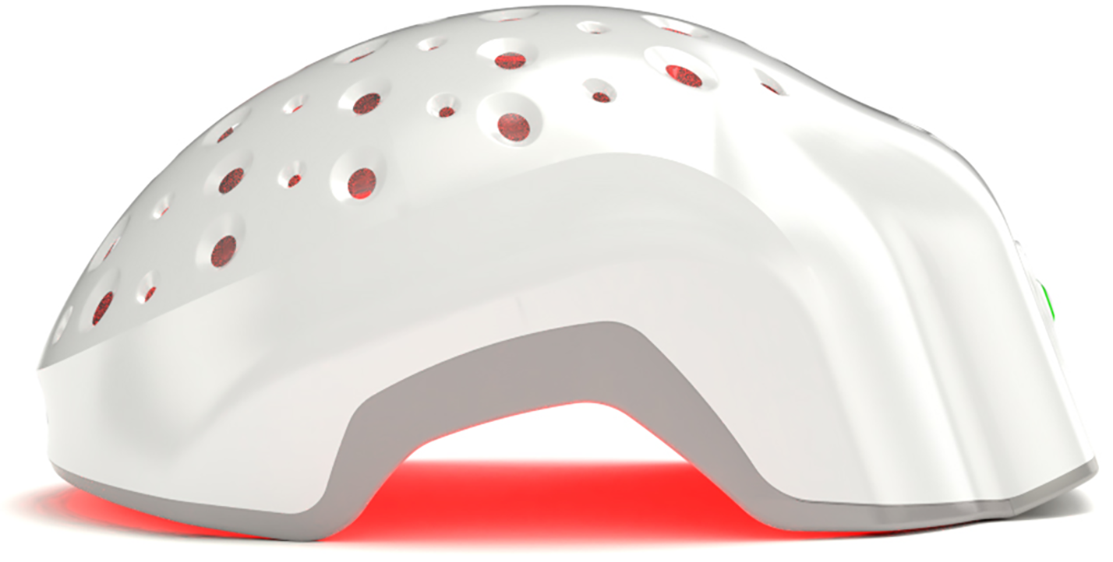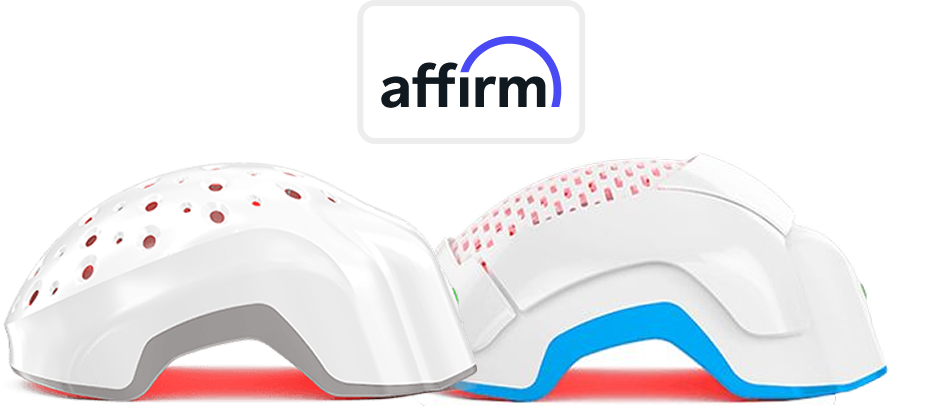We all love using hot tools like hair dryers, flat irons, and curling wands. They help us style our hair in so many fun ways. But using too much heat can actually damage your hair over time. When you use these tools, the high heat can make your hair dry, brittle, and frizzy. The damage happens eventually as you keep using hot tools. But how can you fix the heat-damaged hair?
The first thing is you need to be gentle to fix heat-damaged hair. Use a good hair mask or deep conditioner each week. With some care, your heat-damaged hair can heal and look healthy again. In this blog, we'll explore the signs as well as natural remedies to repair heat-damaged hair in detail.
How Heat Leads to Damaged Hair?
Heat can damage your hair if you use it too much. Here's how high-temperature harms your hair:
When you use heat-stying tools like blow dryers, flat irons, or curling wands, the high heat actually breaks down the protective outer layer of your hair strands, called the cuticle. The cuticle helps keep moisture in your hair.
Once the cuticle is damaged, hair loses porosity (the ability to retain moisture), leading to dry and brittle strands. Additionally, the inner core of the hair strand is exposed, making it weak and prone to breakage. These are the harsh realities of heat damage to hair. The more you use hot tools, the more damage builds up over time. The heat roughens your hair cuticles, leading to frizzy, unmanageable hair that tangles and breaks easily. While a little heat-styling can be good sometimes, too much heat is sure to damage your lovely locks severely. So, be careful with those hot tools!
Also Read: Is Sauna Sessions Bad For Your Hair?
What Does Heat Damaged Hair Look Like?
Identifying heat-damaged hair is essential to address the issue effectively. Here are 5 key signs you need to look out for:
Dryness and Dullness
Your hair loses its shine and looks dull and lifeless, which is one of the first signs of heat-damaged hair. Excessive heat strips away the outer layer of the hair cuticle, resulting in a lack of shine and a dull appearance.
Excessive Frizz
When hair is exposed to high temperatures, it loses moisture, and its protective cuticle becomes rough. This makes the hair strands prone to frizz. No matter how much you brush or the product you use, the frizz just keeps appearing.
Split Ends
Excessive heat weakens the hair strands, causing them to split at the ends. If not addressed, split ends make the hair look unhealthy and lead to further damage and breakage. Regular trims and proper hair care can help prevent and manage split ends caused by heat damage.
Also Read: How to Tell the Difference Between New Hair Growth and Breakage
Tangling
When your hair has been damaged from too much heat, it often gets tangled and difficult to manage. Those rough, raised cuticles from hot tools cause the hair strands to snag and knot up constantly. No matter how much you brush, tangles in that dry, damaged hair seem to form by the minute.
Lack of Elasticity
Heat-damaged hair often loses its natural elasticity. Healthy hair can stretch and bounce back without breaking easily, but excessive heat weakens the hair's protein structure, resulting in reduced elasticity. When you pull or tug on those damaged strands, they just break right off instead of stretching.
Levels of Heat Damaged Hair
Heat-damaged hair can range from mild to severe, depending on the extent of the damage. Here are the typical levels:
i. Mild Damage
Mild heat damage is the first level of damage to hair from hot tools. At this level, your hair might feel a bit dry and look less shiny. You might see a few split ends, but not many. The hair can still hold styles well, but it might be harder to manage on some days. It might frizz a little more than usual, especially in damp weather. The mild hair damage from heat is usually easy to fix with good hair care and less heat use.
ii. Moderate Damage
Moderate heat damage is the next step up from mild damage. Your hair will feel much drier and look duller. You'll notice more split ends, and your hair might feel rough. It may be harder to style and keep frizz under control. Your hair might break more easily when you brush or style it. You may see some changes in your hair's natural pattern, like looser curls if you have curly hair.
iii. Severe Damage
Severe heat damage is a serious problem for hair. At this stage, your hair feels very brittle and breaks easily. It looks dull and lifeless, with no shine at all. Split ends are everywhere, not just at the tips. Your hair might feel rough like straw. It's hard to style because it won't hold a shape well. Curly hair might lose its curl pattern. The hair might feel sticky or gummy when wet. It could also change color, looking lighter or more faded. Severe hair damage from heat is hard to fix, and it often needs professional help or cutting off a lot of hair.
Heat-Damaged Hair vs Healthy Hair: Side-by-Side Comparison
It's easy to see the difference between heat-damaged vs healthy hair, (undamaged hair) when you compare them side by side. Let's take a closer look at the characteristics of each:
| Characteristics | Heat-Damaged Hair | Healthy Hair |
|
Appearance |
Heat-damaged hair appears dry, dull, and frizzy. |
Whereas, healthy hair appears shiny and smooth. |
| Texture | Rough, brittle, and dry | Smooth and soft |
| Elasticity | Brittle, doesn’t stretch, and snaps easily. | Flexible, elastic, and can bend. |
| Porosity | Difficulty retaining moisture. | Retains moisture well. |
| Split Ends | Increased occurrence of split ends. | Minimal split ends. |
| Manageability | Tangles and knots constantly | Smooth and tangle-free. |
How to Fix Heat Damaged Hair?
If your hair is damaged from too much heat styling, don't fret! There are several effective techniques you can use to repair heat-damaged hair. Check out our 5 easy techniques to fix heat-damaged hair.
1. Trim the Split Ends:
One effective way to fix damaged hair is to trim those pesky split ends. Cutting off the damaged ends helps prevent further splitting and promotes healthier hair growth. Regular trims every 6-8 weeks can keep your hair looking and feeling healthier.
2. Deep Conditioning Treatments:
Deep conditioning treatments are essential for repairing heat-damaged hair. Heat sucks all the moisture out of your strands, leaving them dry and brittle. Rich, hydrating hair masks fill much-needed moisture back into those dry hairs. Look for deep conditioners packed with nourishing ingredients like shea butter, oils, and proteins.
3. Air Drying
Let your hair dry naturally without the use of heating tools. Heat-free drying helps prevent further damage and allows your hair to retain moisture. If you must use heat, apply a heat protectant spray or serum to create a barrier between your hair and the styling tool.
4. Gentle Hair Care Practices
When your hair is damaged from too much heat, you must treat it with extra care. Being rough or aggressive with damaged strands will only cause more breakage. Use a wide-toothed comb or a brush with soft bristles to avoid causing further damage or breakage. Avoid pulling on knots, as this can lead to more harm. Furthermore, choose hair care products that are gentle and moisturizing to promote the repair and nourishment of your damaged hair.
5. Hydrate From Within
Fixing damaged hair also involves hydrating it from the inside out. Make sure to drink plenty of water and maintain a healthy diet. Staying well-hydrated promotes healthy hair growth and improves the overall condition of your hair.
Learn More: Can Dehydration Cause Hair Loss?
Can You Fully Reverse the Hair Damage from Heat?
Fully reversing heat-damaged hair is challenging, especially for severe cases, because once the hair's structure is broken down, it can't be restored to its original state. However, you can improve its appearance and health with the above techniques, like regular trimming, deep conditioning treatments, and air drying. Reducing heat styling tools and using heat protectants can also help prevent further damage.
Try Theradome to Stop Hair Loss from Heat Damage
Too much heat causes hair to start falling out. When hair gets dry and damaged from overheating, it becomes weak and brittle. The strands break off easily, resulting in excessive hair shedding and thinning areas. If the heat damage continues, the excessive breakage can eventually lead to hair loss.
To stop this heat-induced hair loss and regrow those thinning areas, try using the Theradome laser helmet. Theradome's special lasers stimulate the hair follicles and increase blood flow to the scalp. The helmet helps weak, damaged follicles revive and grow new, healthy hair strands. With consistent Theradome treatments, you can prevent shedding, strengthen weak areas, and regrow fresh hair, even after severe heat damage.
Conclusion
Taking good care of your hair is so important, especially if it has been damaged by too much heat styling. While hot tools like blow dryers and flat irons can temporarily give you great looks, long-term heating causes severe damage. You can fix the heat-damaged hair by cutting back on heat, using gentle hair practices, and treating your strands with lots of hydrating masks and nutrients. With patience and the proper regimen, your hair can revive from heat damage and look healthy again.


